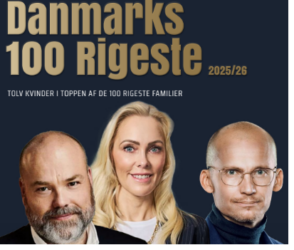Resume af teksten:
De exit polls fra Nederlandene indikerer, at landet sandsynligvis vil få en mere centristisk regering, selvom regeringsdannelsen forbliver udfordrende. Kun 2% af stemmerne mangler stadig at blive talt op, men resultaterne viser skift i forhold til tidligere prognoser. Socialliberale D66 og den populistiske konservative PVV står til 26 sæder hver, mens de konservative liberale VVD står med 22 sæder. Fragmenteringen i parlamentet kan føre til lange koalitionsforhandlinger, ligesom ved de to foregående perioder, der varede over 200 dage. Selvom den hollandske økonomi er stærk, er der behov for klare politiske retninger og investeringer for at tackle udfordringer som arbejdsmarkedsmangler og infrastrukturelle begrænsninger. De nye udmeldinger tyder også på, at en mere pro-europæisk holdning kan være på vej. Dog kan langvarige forhandlinger og usikker politisk kurs sinke nødvendige reformer og investeringer, hvilket potentielt kan påvirke økonomien negativt.
Fra ING:
The exit polls show that the Netherlands will likely see a more centrist government again, although government formation will remain a challenge. A more pro-European stance from the next government is likely

The main risk is now that prolonged coalition negotiations and policy indecision could stall much-needed reforms and investments
With under 2% of votes still to be counted, the Dutch elections show quite some shifts from the pre-election polls. Social liberals D66 come out on top with 26 out of 150 seats, tied with populist conservative PVV, which still makes the race for the highest scoring party too close to call. Conservative liberals VVD come in third at a much better than expected 22 seats, followed by the social democrats/progressive green left (GL-PvdA) at 20 and the Christian democrats at 18. Which parties will be able to form a government remains an open question, with most parties excluding PVV, but also ideological and pragmatic hurdles to reach a majority coalition.
The outcome leaves the Dutch parliament highly fragmented, with the lowest number of seats ever for the largest party since World War II. This fragmentation reflects a broader European trend and underscores the need for compromise. That likely makes coalition-building a complex and lengthy process once again. The last two formation periods lasted more than 200 days, and we think it could well take months again before a new government is formed.
That is no immediate problem, as the Dutch economy continues to perform well and comes from a strong fiscal position compared to its European peers. However, persistent supply-side constraints – some very acute, like nitrogen and net congestion, others more structural, such as labour shortages, regulatory bottlenecks, and infrastructure limitations – are increasingly weighing on potential growth. Addressing these challenges will require clear policy direction and targeted investment and would benefit from a relatively quick formation. Amongst corporate leaders, there is broad agreement that a stable government, willing and able to govern for a full term, would benefit the economy.
The parties most likely to participate in a government based on tonight’s exit polls should be able to find each other on issues like investments in the energy grid and nitrogen emission regulation, and enforcement. Most notably, marginalisation of the farmer’s party (BBB) marks a significant turning point on nitrogen, while the largest parties are, on average, also more in favour of climate policies than the current coalition. But when they will be able to start on these issues and when effective results can be expected remains a very open question.
Europe is another area where we are likely to see a shift. On average, Dutch citizens are pro-European, but in the last elections they voted for relatively Eurosceptic parties, three of which are part of the coalition (PVV, NSC and BBB). Today’s polls show a more pro-European shift, and the Dutch approach to the EU could therefore become more constructive. However, any changes are expected to be gradual and conditional and still dependent on which way a coalition will lean.
Looking forward, the main risk is that prolonged coalition negotiations and policy indecision could stall much-needed reforms and investments. Think of the electricity grid, for example. While financial markets are unlikely to react strongly to delays, the real economy could suffer from inertia. The challenge for the next government will be to translate electoral compromise into policy certainty, effective action and political stability, ensuring that the Netherlands remains resilient and competitive in a rapidly changing European and global environment.
Hurtige nyheder er stadig i beta-fasen, og fejl kan derfor forekomme.


